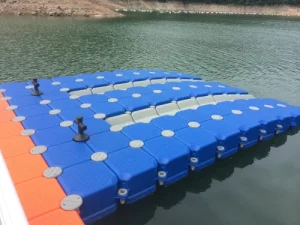Fish farming, also known as aquaculture, has gained significant traction as a sustainable food source to meet the growing demand for seafood. To increase productivity and lower costs, utilizing essential fish farming equipment is crucial. This article explores the fundamental tools and technologies that can enhance efficiency and output in fish farming operations. One of the most vital pieces of equipment in fish farming is the water quality monitoring system. This technology allows farmers to continuously assess the water’s temperature, pH, dissolved oxygen levels, and ammonia concentration. Maintaining optimal water quality is critical for fish health and growth. Automated monitoring systems reduce the need for manual checks, allowing farmers to respond swiftly to any adverse changes, thus minimizing fish stress and mortality rates. Aeration systems are another essential component in fish farming. They improve water circulation and oxygen levels, which are vital for fish survival and growth.

Proper aeration ensures that fish have access to sufficient oxygen, particularly in densely stocked environments. Implementing efficient aeration techniques can significantly boost fish growth rates and reduce feed conversion ratios, ultimately lowering costs. Feeding systems are integral to maximizing productivity. Automated feeders help ensure that fish receive the right amount of feed at the appropriate times, reducing waste and preventing overfeeding. This technology not only saves time but also helps in optimizing feed efficiency at hiseadock. By utilizing the correct feeding strategies, fish farmers can enhance growth rates and improve the overall health of their stock. Stocking density is another critical factor in fish farming, and specialized equipment such as fish grading machines can assist in achieving optimal density. These machines sort fish based on size, ensuring that larger fish do not compete with smaller ones for resources. This practice promotes healthy growth and reduces stress among the fish, leading to better survival rates and higher overall productivity.
Biosecurity measures are essential in a fish farming business to prevent disease outbreaks, which can have devastating effects on fish populations and farm profitability. Equipment such as water filtration systems, UV sterilizers, and disinfection stations play a crucial role in maintaining biosecurity. These tools help ensure that pathogens and parasites are kept at bay, reducing the likelihood of disease spread and minimizing the need for costly treatments. Harvesting equipment, including nets, traps, and pumps, is also vital for ensuring efficient operations. Streamlined harvesting processes reduce labor costs and help maintain the quality of the fish during collection. Investing in high-quality harvesting equipment allows farmers to minimize stress on fish and maintain better overall product quality, which is essential for marketability. Finally, record-keeping and management software can significantly enhance operational efficiency. By tracking growth rates, feed conversion, and mortality rates, farmers can make informed decisions that drive productivity and cost savings.

